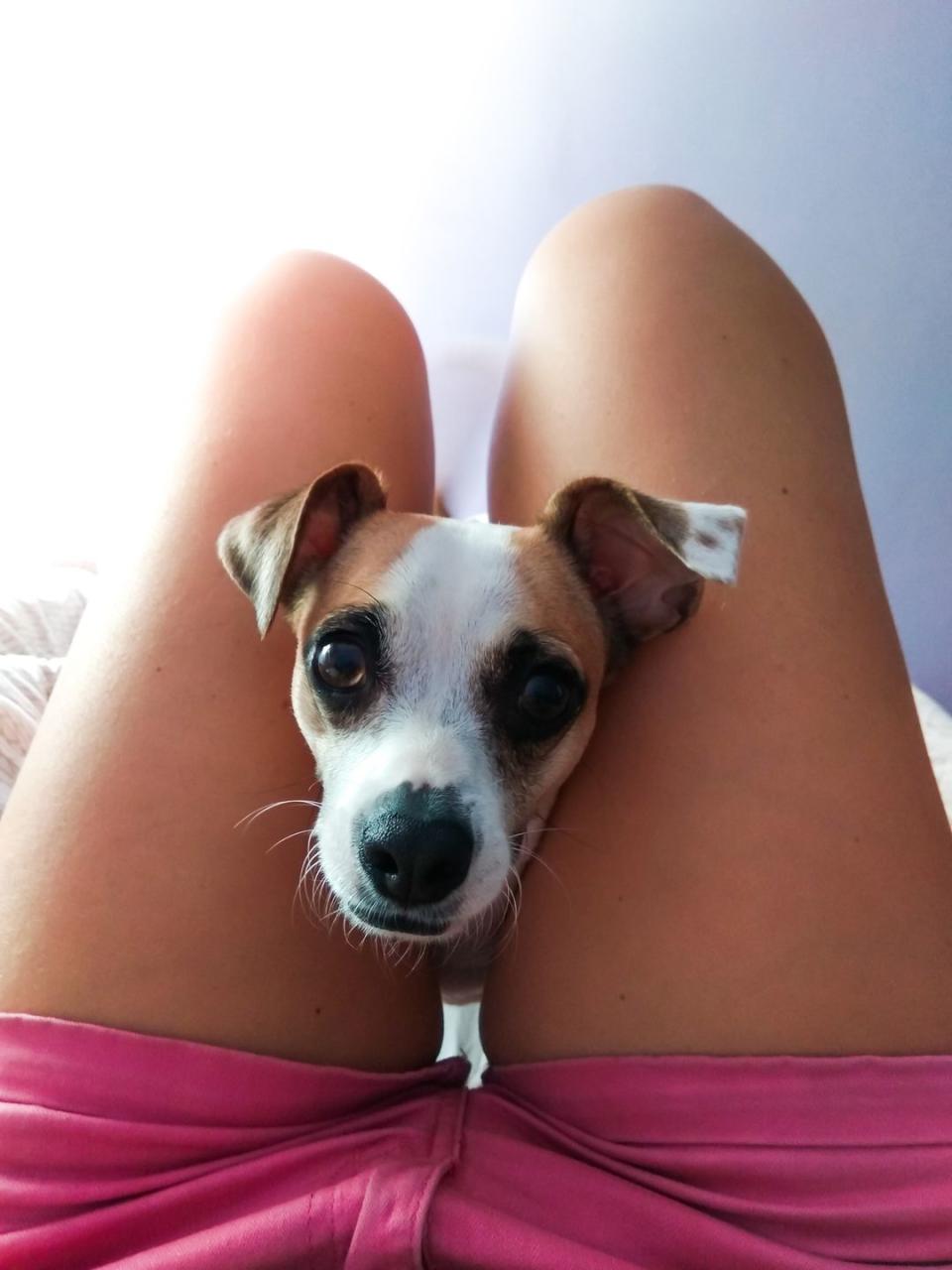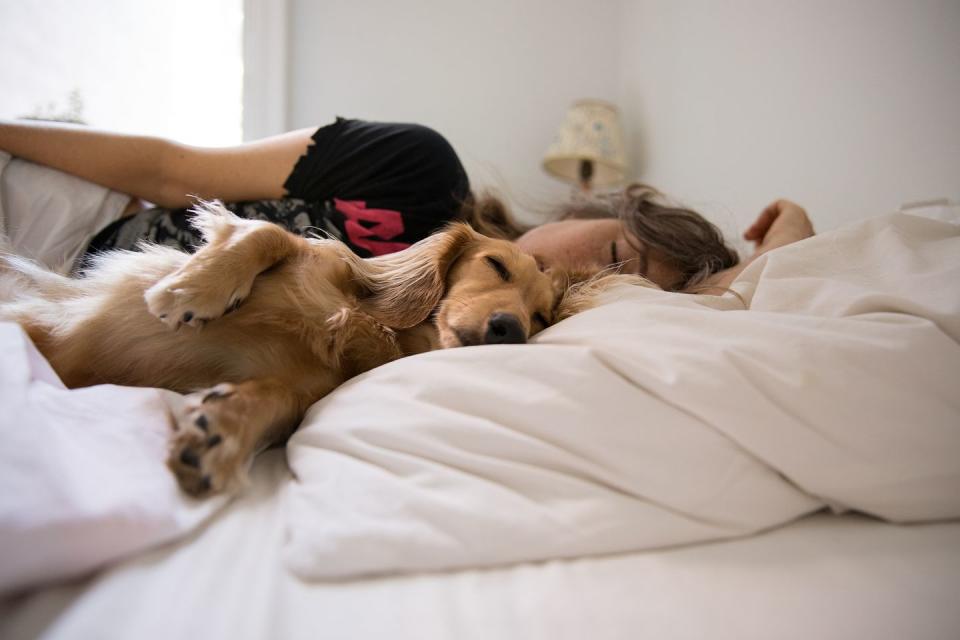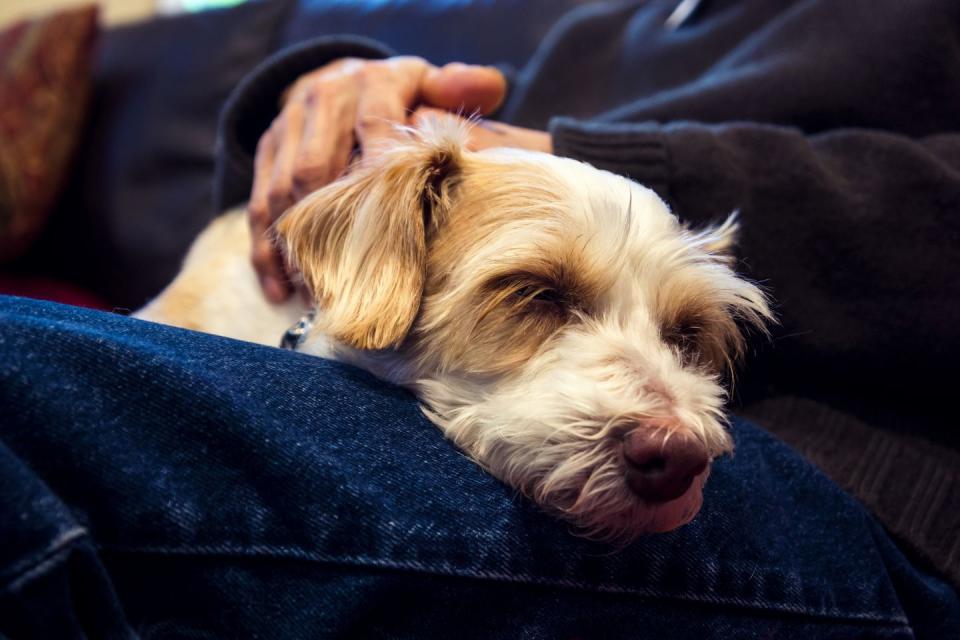If You Have a "Velcro Dog," Here's How You Can Alter Their Behavior

Choosing to add a dog to your family can be one of the most exciting and rewarding decisions you make. But you may soon find that your new furry friend is following you from room to room and won't ever let you out of their sight. Although this may seem sweet at first, it can get frustrating pretty quickly — especially when you find yourself constantly tripping over your pup and or unable to take a trip to the bathroom by yourself.
If this is your reality, chances are you're dealing with a velcro dog. The good news is that there are plenty of tips and tricks from experts on how to deal with a velcro dog and help them to become a bit more independent.

So what exactly is a velcro dog?
The tell tale sign of a velcro dog is that it never stops following you around and is constantly beside you. They always have an eye on you and even anticipate when you may get up and move. Velcro dogs are often confused with dogs with separations anxiety, and although some dogs can have both, they are not one and the same. According to Puppy Leaks, velcro dogs are dogs that want to be as close as possible to their owners when they're around, while dogs with separation anxiety panic when their owner is gone. "Many dogs that exhibit separation anxiety are also velcro dogs, but not all velcro dogs have separation anxiety," Puppy Leaks notes.
What causes a dog to become a velcro dog?
If you're dealing with a velcro dog there's a good chance that you taught them to behave this way, according to the American Kennel Club (AKC). If you constantly give your dog positive reinforcement, pets or treats every time they come up to you, they quickly learn that they'll be rewarded for clingy behavior. The AKC also states that if you let your dog sleep in your bed "you might be creating a dependency and reinforcing his need to be close to you at all times."

Your dog's background may also be the cause of their clingy behavior. If you've adopted a rescue dog who has dealt with abandonment in the past, they have a higher likelihood of being a velcro dog. Older dogs that develop vision and hearing impairment can also become velcro dogs, since they find comfort in having their human nearby. And some dogs are under-stimulated and simply follow you around out of boredom.
Are certain dog breeds more likely to be velcro dogs?
Dogs that have been bred to be lap dogs (such as Chihuahuas or Cavalier King Charles Spaniel) or working dogs (such as German Shepherds or Golden Retrievers) are very dependent on humans and are therefore much more likely to be velcro dogs, according to Puppy Leaks.

How do you handle a velcro dog?
The best thing you can do is to prevent your pup from becoming a velcro dog by setting firm and consistent boundaries when they're a puppy, according to The Hunting Dog. Send them to their own bed every night and only give positive reinforcement and rewards when appropriate — when they successfully follow a command, for example.
If you're dealing with a dog who has already developed the velcro dog syndrome, there are still a number of things you can do to try to stop the behavior, according to Canada Vet Express. Teaching your dog the "stay" command — and giving positive reinforcement when they follow it — is incredibly useful in preventing them from following you around everywhere. They will soon learn that they will be rewarded for not constantly sticking by your side. Another trick is to buy your dog mentally stimulating toys that will give them something to focus on other than your every movement. It may take your dog weeks or even months to get past their velcro habits, but by remaining strict and consistent with your rules, they'll learn to give you some distance.
You Might Also Like
